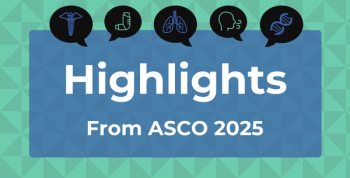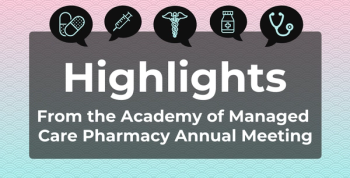
Dr Moon S. Chen Jr Discusses Strategies for Reducing Cancer Disparities in Asian Americans
The unique cancer burden among Asian Americans calls for a multifaceted strategy to address these disparities, according to Moon S. Chen Jr, PhD, MPH, professor of hematology and oncology at UC Davis Comprehensive Cancer Center and principal investigator of The National Center for Reducing Asian American Cancer Health Disparities.
The unique cancer burden among Asian Americans calls for a multifaceted strategy to address these disparities, according to Moon S. Chen, Jr, PhD, MPH, professor of hematology and oncology at UC Davis Comprehensive Cancer Center and principal investigator of The National Center for Reducing Asian American Cancer Health Disparities.
Transcript (slightly modified)
Can you discuss your research on cancer disparities and how they affect Asian Americans?
That’s one of my favorite topics. Here’s what we know. For Asian Americans, we are the first population to experience cancer as the leading cause of death. In the past, all other populations, the leading cause of death was heart disease. More recently, in 2012, cancer became the leading cause of death for Latinos, and in some American Indian tribes, cancer is also the leading cause of death. Cancer is the leading cause of death for all Americans under age 85, so now cancer is a problem that affects all of us.
I believe that now that it’s a problem, the 3 most important strategies to reduce that risk are, number 1, avoid cancer, ie, prevent it and to the extent that we can prevent it through not smoking, tobacco cessation, and then fortunately we have 2 vaccines that can prevent cancer. One is the human papilloma virus vaccine, and the second one is hepatitis B, and how we wish we could have more vaccines that prevent cancer. But in any case, applying the known prevention strategies that work is, I think, a fundamental step.
Secondly, if we cannot prevent it—some cancers are not preventable—it’s abating or controlling, and that is through early detection, screening for age-appropriate, gender-specific frequencies, and so getting screened for cancer is perhaps the second fundamental thing that can reduce risk. Then, thirdly, the amelioration, that is, to improve the quality of life.
As I said, for Asian Americans we have taken the strategy of avoidance if possible, and we’ve also conducted that. Our cancer burden is unique because we have been considered the model minority, but we are the model in that we’re the first US racial/ethnic group to experience cancer as a leading cause of death.
But our cancers are unusual in the sense that they’re more disproportionately due to infectious causes, like viruses, like liver cancer which is a virus and cervical cancer which is a virus, as opposed to some of the chronic forms like lung and breast cancer, prostate cancer, which are multiple agents involved. At the same time, I think we can address these because these are unnecessary. So those are our strategies in terms of what we’re doing to reduce cancer health disparities among Asian Americans.
Newsletter
Stay ahead of policy, cost, and value—subscribe to AJMC for expert insights at the intersection of clinical care and health economics.







































